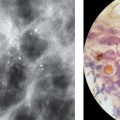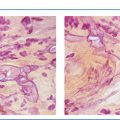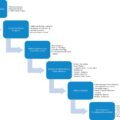Introduction
A breast cancer diagnosis can be highly stressful and traumatic, not only for the patient but also for their family and support systems. The experience of moving through the breast cancer continuum from diagnosis to treatment and beyond is a complex process that can be alleviated by the guidance and support of an Oncology Nurse Navigator (ONN). An ONN is defined by the Oncology Nursing Society (ONS) as “a professional RN with oncology-specific clinical knowledge who offers individualized assistance to patients, families, and caregivers to help overcome healthcare system barriers.” The ONN works to help overcome healthcare system barriers and facilitate timely access to quality medical and psychosocial care from pre-diagnosis through all phases of the cancer experience. Using the nursing process, the ONN provides education and resources to cancer patients to better facilitate informed decision making and timely access to care. This chapter will focus on oncology nurse navigation in breast cancer care.
History of Patient Navigation
In 1989, the American Cancer Society (ACS) published the Report to the Nation on Cancer in the Poor , which summarized a series of national hearings that looked at patient access and barriers to care for those who live in poverty. The report found that poor Americans face significant barriers to obtaining cancer care. Those who live in poverty received substandard healthcare that they had difficulty paying for and were made to “endure assaults on their personal dignity when seeking treatment for cancer.” The report identified that cancer education programs were often “culturally insensitive and irrelevant.” Then president of the ACS, Dr. Harold Freeman, subsequently developed the first patient navigator program to address the elimination of barriers to care in Harlem in 1990. Freeman recognized that cancer care for poor, underinsured, and uninsured people faced unique barriers to care, which led to the development of a patient navigation program for the underserved. From this, Freeman was able to prove that cancer survival rates can improve with increased screening and reducing barriers to healthcare for cancer patients. Initially this navigation program was focused on breast cancer patients and staffed by lay community case workers. They worked to facilitate access by addressing financial barriers, such as no health insurance, as well as communication, information, and medical system barriers. Over time the scope of patient navigation has expanded beyond just breast cancer and across the entire healthcare continuum including prevention, detection, diagnosis, treatment, and survivorship to the end of life.
In 2005, the Patient Navigator and Chronic Disease Prevention Act added Section 340a of the Public Health Service Act (PHSA) that encouraged the development of programs to improve health outcomes for patients with cancer and other chronic diseases, with the goal of improved access to high-quality coordinated care. In 2012, the American College of Surgeons Commission on Cancer created a new standard addressing patient navigation to be implemented by 2015 for cancer programs seeking accreditation.
Program Accreditation
Healthcare accreditation validates that a cancer program meets or exceeds a set of quality and care standards set by an “accrediting” body of experts. Many accrediting bodies require that the cancer program have a navigation program in place. The National Cancer Institute defines a standard of care as “treatment that is accepted by medical experts as a proper treatment for a certain type of disease and that is widely used by healthcare professionals.” In breast cancer care, the standards that define and measure quality of care involve multiple organizations but are largely driven by the National Comprehensive Cancer Network (NCCN), the National Accreditation Program for Breast Centers (NAPBC) offered by the American College of Surgeons, and the American Society of Clinical Oncology (ASCO). NAPBC represents a consortium of national, professional organizations dedicated to the quality of care of patients with diseases of the breast. In 2018, NAPBC published navigation standard 2.2, which states that, “A patient navigation process is in place to guide the patient with a breast abnormality through provider and referred services. The patient navigation process includes consistent care coordination throughout the continuum of care and an assessment of the physical, psychological, and social needs of the patient. The anticipated results are enhanced patient outcomes, increased satisfaction, and reduced costs of care. Patient navigation is provided by a professional (for example, nurse, social worker) who has documented training to provide individualized assistance to breast disease patients, families, and caregivers at risk. If patient navigation is provided by a lay navigator, then he or she is required to have documented patient navigation training.”
In 2021, ASCO developed Oncology Medical Home (OMH) standards, which provide a comprehensive road map for oncology practices to deliver high-quality, evidence-based cancer care including access to equitable, comprehensive, and coordinated team-based care including a process for patient navigation.
Defining the Oncology Nurse Navigator Role
Patient navigation can be performed by different types of professionals, including trained lay personnel, social workers, advanced practitioners, as well as nurses. Table 3.1 outlines the different navigation roles. There is variability in workflow by institution, but typically the ONN is one of the first points of contact for a newly diagnosed patient, often from the radiology department after the patient has an abnormal mammogram. The ONN completes a nursing assessment to identify the patient’s unique, individualized needs. They offer emotional support, advocate for patients and their loved ones, provide continuity of care, address psychosocial needs, provide education, and assess barriers to care.
| Oncology Nurse Navigator | Registered nurse with oncology expertise based around the core competencies of navigation, including the facilitation of timely and coordinated care, education and empowerment of patients and caregivers, promotion of patient- and family-centered care, and effective communication within the multidisciplinary team. |
| Social Work Navigator | Oncology social workers perform comprehensive psychosocial assessments, counseling, education, patient navigation, case management, resource coordination, and program development. |
| Financial Navigator | Maximize health insurance benefits, reduce economic barriers to care, and accurately explain insurance coverage. Do assessments for risk for and help mitigate financial toxicity. |
| Lay Navigator | A trained non-professional or volunteer who provides guidance and support to patients to overcome healthcare system barriers and facilitate timely access to care. Lay navigators can take on more “concrete” tasks such as completing paperwork, finding local or statewide resources, providing information on clinical trials or survivorship programs, while triaging the more clinical questions. |
Literature Review of Oncology Navigation
According to ONS, patient navigation in oncology provides many benefits for patients, including a shorter time to diagnosis and start of treatment, increased patient and caregiver knowledge, better adherence to recommended care, and improved quality of life. A randomized pilot study done in 2013 found that ONN’s who specialize in breast cancer were more likely to provide the right amount of support and resources compared to other healthcare providers. Breast navigators also helped give patients their results as soon as possible, provided much needed emotional support, and helped them get accurate information from an expert in a timely manner. Randomized navigation studies on resolution of breast abnormal screening demonstrate that navigated patients experienced a shorter time to results versus those in a non-navigated group. Patient navigation improves timeliness in diagnosis and treatment of patients in underserved populations and was found to be more efficacious when utilized shortly after screening or diagnostic testing.
In terms of improved coordination of care and communication, assessment, and adherence of treatment recommendations, it has been demonstrated that there is a decrease in time to definitive therapy and a higher percentage of newly diagnosed patients who start treatment within 30 days. Hoffman et al. found that women with breast cancer who received patient navigation, in particular those requiring biopsy, “reached their diagnostic resolution” significantly faster than those who did not have a navigator.
There are organizational benefits as well. A study done by Kline et al. demonstrated that navigation resulted in increased patient retention and improved physician loyalty with downstream increase in revenue. It was also associated with a reduction in unnecessary resource utilization, such as emergency department visits and hospitalizations, thus decreasing burdens on oncology providers, potentially reducing burnout, errors, and costly staff turnover. One of the benefits of using nurses with high levels of knowledge and expertise is that they can proactively reference NCCN guidelines, thereby facilitating appropriate staging studies in collaboration with the oncology provider, which can save time and also lead to positive financial returns on investment. Bernardo et al. reviewed 113 published articles that assessed oncology navigation between 2010 and 2018 and found that the majority of studies identified favorable outcomes for oncology navigation, including increased uptake of and adherence to cancer screenings, timely diagnostic resolution and follow-up, higher completion rates for cancer therapy, and higher rates of attending medical appointments.
Role Development
ONS recognized the need for oncology nurse navigators to have a defined scope and role as they serve not only the patient but the cancer care system in which they work. This led to the development of core competencies, first issued in 2013 and later revised and published in 2017, as a way to standardize the role. They identified priorities, including the development of a standardized job description and orientation as well as professional certification.
The ONN care model describes navigator interventions in the following categories:
- •
Assess and address barriers to care.
- •
Provide education, resources, and referral to local and national resources (i.e., physical/occupational therapy, dietitians, home health, financial counselors, and foundations).
- •
Participate in promotion of shared decision making, an important strategy to facilitate patient-centered care where patients are faced with complicated treatment decisions that require them to weigh efficacy and safety, quality of life, and cost.
- •
Promote advanced care planning by encouraging patients to talk about their treatment wishes and overall goals of care.
- •
Support palliative care by assessing for late and long-term side effects and other physical barriers to patients’ quality of life and educating patients about the differences between palliative care and hospice.
Knowledge and Skills Requirements
ONS provides a set of recommendations for the ONN in terms of experience and skill set.
- •
Strong oncology knowledge and experience.
- •
Basic knowledge of insurance reimbursement systems
- •
Working knowledge of financial hardships and payer coverage
- •
Working knowledge of national, regional, and community resources
- •
Knowledge of self-care strategies and resources
- •
Critical-thinking skills
- •
Strong leadership skills
- •
Strong interpersonal skills
- •
Ability to develop collaborative relationships both internally and externally
- •
Ability to work in teams
- •
Ability to work autonomously
- •
Strong verbal and written communication skills
- •
Strong organizational skills
- •
Ability to prioritize and reprioritize quickly
- •
Basic computer skills
ONS also defines the differences between the expert and novice ONN ( Table 3.2 ).









